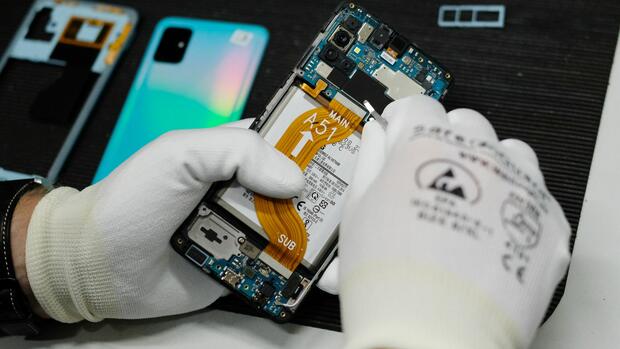![]()
Berlin The head of the Federal Consumer Association, Ramona Pop, hopes for a “real progress”, as she told the German Press Agency in Berlin. As a survey shows, many mobile phone users are afraid of repairs because of high costs.
The project of a “right to repair” is anchored in the coalition agreement of the traffic light parties and includes several points. Lemke had announced this as an “important step out of the throwaway society”. From the point of view of pop, certain conditions must be met. Thus, the service life of a product must be foreseeable at the time of purchase.
In a survey, the German Consumer Association substantiated the impression that mobile phones can often only be repaired at high cost. For common repairs, users have to dig quite deep into their pockets, especially for cheaper models, as the survey shows, which is available to the German Press Agency in Berlin.
For the study, 345 repair offers had been examined. For a display replacement, 42 percent to 73 percent of the new price is due for low-cost models. For models over 600 euros, this will cost less than half of the new price.
In fact, many do not have their broken cell phone repaired. According to a forsa survey commissioned by consumer centers, 47 percent of smartphone owners surveyed whose device had a defect in the past 24 months said they would not have it repaired. Almost half of them stated that this would have been too expensive.
For a “right to repair”, Pop named a repairability index as central, as Lemke had already done before. The consumer watchdog said: “Other countries like France are moving ahead.” With the French repair index, consumers could judge devices by how well they are repairable. “This would not only be conceivable for Germany, but also desirable.”
Because many wished the devices would last longer, Pop said. The products should not break shortly after the end of the warranty, as is often the case. “More and more people are saying: I don’t have to buy a new one right away just because something broke,” Pop said. “However, we also see that relatively high repair costs deter many people.”
Pop has another suggestion. “It would be conceivable to combine a right to repair with a repair bonus in order to offset the sometimes high costs to a certain extent,” she said. Of course, especially with devices that might not have been quite so expensive, one is considering whether one should not rather buy new. “With a repair bonus, the repair would be supported,” Pop said. “It would then be paid out for certain repair services.”
A “right to repair” is more timely than ever, Pop said. “Due to the disruption of supply chains, not every product is constantly available.” Repair instead of a new purchase could also bring considerable financial relief in times of high inflation.






